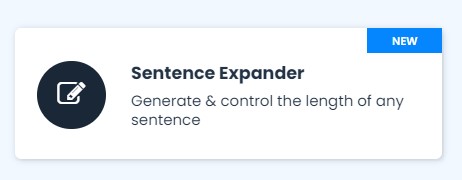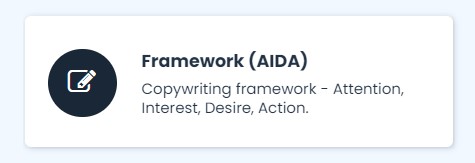When it comes to competition, not all brands have the same advantages. One area where a lot of brands fall short is their use of search engine optimization (SEO).
SEO is an important part of any e-commerce brand’s marketing strategy because it helps generate traffic and boost sales. However, some brands fail to take advantage of this digital opportunity by neglecting to prioritize other languages in their SEO strategy. Brands that do not offer site translations in multiple languages are missing out on potential customers and customers who speak different languages. To learn more about how you can take the next step in your multilingual SEO strategy, read on!
The importance of SEO
Search engine optimization (SEO) is an important part of any e-commerce brand’s marketing strategy. This is because it helps generate traffic and boost sales, which are the two main goals of any e-commerce business. But when it comes to SEO, not all brands have the same advantages. Some brands don’t prioritize SEO in other languages and miss out on potential customers who speak different languages. Brands that do not offer site translations in multiple languages are missing out on valuable digital opportunities.
Why you need to have a multilingual strategy
If you own a business that sells products or services to consumers who speak different languages, then you need a multilingual SEO strategy. By translating your website into multiple languages, you are enabling users from various countries to find more relevant information about your brand. This will help generate traffic and boost sales for your company.
Additionally, it is important for e-commerce brands to have a multilingual SEO strategy because it allows them to reach customers in their native language. If you have an online store but only offer site translations in one language, then you are missing out on the opportunity to reach potential customers who speak other languages. When these customers don’t find the content they are looking for in their native language on your site, they are likely to look elsewhere.
Furthermore, if a customer can’t find what they want on your site in their native language, they may not be able to read the content on your site at all. In this case, even if the customer finds something that interests them on another website with similar products or services, chances are high that the customer will simply purchase those items from the other website because of how difficult it was for them to read your site’s content with its English translation alone.
An excellent way to ensure that this doesn’t happen is by adding various translations of your main page and product pages onto your website so that interested customers can find what they’re looking for as soon as possible!
How you can improve your site’s SEO
One way you can improve your site’s SEO is by translating it. If a user has to use Google Translate, for example, and the site does not offer a translation into their language, they will likely leave or never see the site in the first place.
A multilingual SEO strategy also includes optimizing your site for other languages, as well. You should include keywords that are specific to each language you are targeting, and optimize your titles and descriptions for those languages. You should also consider how to choose an effective domain name for a non-English e-commerce website.
Some brands who have established themselves in a country with one native language fail to invest the necessary time and resources into expanding internationally because they think they’ll lose their competitive edge by expanding outside of their native market.
However, there are many benefits to translating your website such as increased customer loyalty and higher brand awareness. By focusing on other languages in your SEO strategy, you can take advantage of these opportunities!
Translate your website into different languages
One of the most obvious ways to take your multilingual SEO strategy to the next level is by translating your website into different languages.
If you are a global brand, it’s important to recognize that many people around the world speak English as a second language. If you only offer marketing efforts in English, you’re limiting your potential customer base and excluding those who don’t speak or read English fluently. By translating your site into at least two other languages, you can increase your audience and reach new customers.
While there are certain benefits to using Google Translate for an automated translation, it’s always best to have an expert translate your site into another language(s). Having an expert will not only help ensure the accuracy of these translations but also allow you to maintain a high-quality image in their country. This, in turn, will create more trust with potential customers while increasing conversions on your site when they visit it.
When deciding which languages to translate your site into, make sure that you’re covering all of the major areas where target customers live. For example, if you’re targeting customers primarily in Europe, then it would be wise for you to translate your site into three European languages: German, French and Italian. When deciding how much time and money you’ll spend on translations, consider what percentage of traffic comes from those countries and do research on how much revenue that traffic brings in before making a decision.
Use local keywords in your content
The first step to incorporating multilingual SEO into your marketing strategy is to use local keywords in your content. This can be anything from the product descriptions you include on your website or the keywords used in social media posts. You should also use these keywords throughout your site and when you talk about your products on social media.
An example of this would be using “kein” instead of “no” when talking about a product in German or using “черный” instead of “black” when talking about a product in Russian. You might even include these words as hashtags on Instagram or Twitter to increase reach across languages.
Optimize your images for other languages
If you want to make sure your brand is accessible to people who speak other languages, the first step is to ensure that your images are optimized for those languages. This will allow users from other countries to see your content and enjoy what you have to offer.
This isn’t difficult. All it takes is a few quick tweaks! For example, when uploading an image on your site, instead of labeling it with the English name only, add in the translation as well. When an image has both the English and translated names, it makes it easier for search engines like Google to understand what your page is about.
Another way you can optimize your images for other languages is by adding alt text in different languages. Alt text lets web users know what they are looking at without relying solely on the visual representation. This is important when trying to reach out to audiences from different parts of the world because not everyone will be able to read English! If you haven’t already done so, be sure add alt text in different languages on all of your images uploaded onto your website now!
Dont just translate – Create unique content!
One of the easiest ways to get started with your multilingual SEO strategy is by incorporating translations into your content. But there’s more to it than just translating your website into different languages.
Your content should be created in a way that is natural and comprehensible for readers in a particular language, without compromising its original message.
You may translate your website into different languages and publish them separately on the web, but you will want to make sure that each version has a distinct identity so that they can stand out in search engine rankings. Doing this will help boost your SEO results because search engines rank pages based on their similarity on the subject matter.
For example, if you were a beauty brand, you could have one page for English-speaking customers and another for Spanish-speaking customers with unique content about the same topic like beauty products or hair care tips – all in their respective languages. You would also want each page to have its own URL so that they are easier to find and promote with digital marketing efforts.
Another way to incorporate translations into your e-commerce brand is by including social media posts in different languages as well as answering customer questions on social media sites like Facebook Messenger or Twitter using translators. This not only helps provide an excellent customer service experience; but it also shows that you value international audiences enough to create content specifically for them!
Using AI writing assistants to scale your content marketing
AI writing assistants will help you scale your content marketing efforts by providing templates for your blog posts.
One way to scale your content marketing efforts is to use AI writing assistants. They’re helpful because they provide templates for your blog posts in one click, which saves you time and effort. You can also use them to write articles in different languages and they make it easy to format text in a variety of ways.
If you’re ready to take the next step with multilingual SEO, this is a great way to start!









